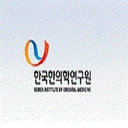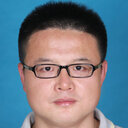Antiplatelet Activity of Acylphloroglucinol Derivatives Isolated from Dryopteris crassirhizoma.
Ključne riječi
Sažetak
Platelets are an important component of the initial response to vascular endothelial injury; however, platelet dysfunction induces the acute clinical symptoms of thrombotic disorders, which trigger severe cardiovascular diseases such as myocardial infarction, ischemia, and stroke. In this study, we investigated the Dryopteris crassirhizoma's antiplatelet activity. A water extract of D.crassirhizoma (WDC) was partitioned into dichloromethane (DCM), ethyl acetate, n-butyl alcohol, and water. Among these four fractions, the DCM fraction potently inhibited the collagen-stimulated platelet aggregation in a concentration-dependent manner. From this fraction, five different acylphloroglucinol compounds and one flavonoid were isolated by activity-guided column chromatography. They were identified by comparing their mass, 1H-, and 13C-NMR spectral data with those reported in the literature. Quantifying the six compounds in WDC and its DCM fraction by high-performance liquid chromatography (HPLC) revealed that butyryl-3-methylphloroglucinol (compound 4) was the most abundant in these samples. Additionally, butyryl-3-methylphloroglucinol showed the strongest inhibitory activity in the collagen- and arachidonic acid (AA)-induced platelet aggregation, with inhibition ratios of 92.36% and 89.51% in the collagen and AA-induced platelet aggregation, respectively, without cytotoxicity. On the active concentrations, butyryl-3-methylphloroglucinol significantly suppressed the convulxin-induced platelet activation. Regarding the structure-activity relationships for the five acylphloroglucinol compounds, our results demonstrated that the functional butanonyl, methoxy, and hydroxy groups in butyryl-3-methylphloroglucinol play important roles in antiplatelet activity. The findings indicate that acylphloroglucinols, including butyryl-3-methylphloroglucinol from D.crassirhizom, possess an antiplatelet activity, supporting the use of this species for antiplatelet remedies.



